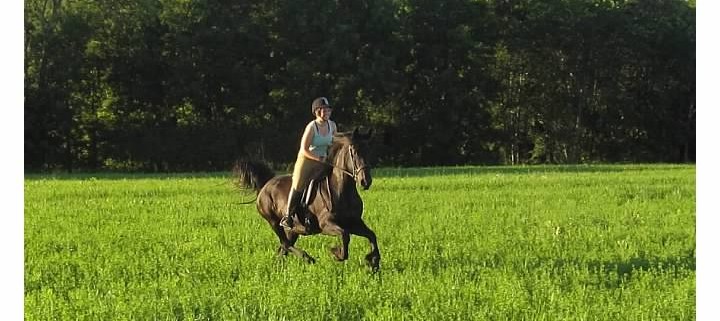Tying Up in Horses
Hard-working horses can experience a variety of muscle cramp conditions. Muscle cramps can hit while the horse is exercising or after a good work out. Severity ranges from stiffness in the legs to full body intense cramps that can last for hours. The general term for all of these cases is “Tying Up”. When a horse feels the cramps coming on they will usually be reluctant to move forward. They will halt and not want to continue. Many horses will stretch their hind legs out as if to stretch their hindquarters, which are commonly effected by the Tying Up. In severe cases, the horse may have difficulty standing.
Be careful not to confuse Tying Up with regular muscle soreness or strained muscles. Your veterinarian can diagnose Tying Up with a blood test. Horses that have experienced severe cramps have cellular damage, releasing creatine kinase (CK) and aspartate aminotransferase (AST) which can be detected in the blood. If your horse is Tying Up, provide them with plenty of fresh water. Your vet may want to give additional fluids and possibly pain medication. Let your horse rest in a box stall or small paddock where they can move about freely, but not exert themselves too much for a few days to recover. Gradually start hand-walking them over the course of a week and then slowly bring them back into their usual exercise routine, but be very careful not to over-do it.
Any horse can experience Tying Up so the best way to prevent this painful condition is to pay attention to your horse’s fitness. Gradually increase the intensity of their training so you do not push them beyond their limits. Electrolyte, vitamin E and selenium supplementation will provide the horse’s muscles with the nutrients they need for optimal health. Some horses (usually Quarter Horses, Thoroughbreds, Standardbreds and Arabians) can be predisposed to muscle abnormalities that lead to chronic Tying Up. Horses with a tendency to be easily excited or wound up are more likely to experience Tying Up. These horses do best on a very regular exercise routine and any stress triggers should be eliminated. Diets high in forages and low in grain are now being found to be beneficial as well. Talk to your vet about potentially using muscle relaxers or therapeutic massage to help prevent cramps. There is no “cure” or sure-fire prevention, but Tying Up can be managed through diet and exercise.
Studies
Exertional rhabdomyolysis in a patient with calcium adenosine triphosphatase deficiency.


